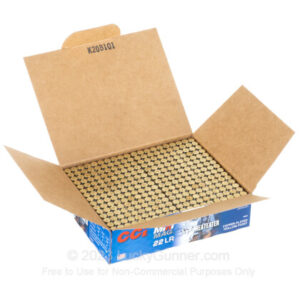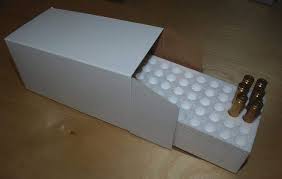Regarding firearms and ammunition, dependability, security, and safety are paramount. How your ammo is packaged may make or break your shooting experience, no matter how skilled you already are. This in-depth shopping guide will delve into the world of Commercial Ammunition Packaging, studying its many facets so that you may make educated selections concerning the safekeeping and shipping of your ammo. Everything you need to know about packaging, from the significance of different materials to how to choose the best packaging for your purposes, is right here.
List of Subjects
- The Fundamentals of Ammunition Packaging and Beyond
- Materials for Packing, Their Vital Role
- Packaging Varieties for Marketed Arms
- Identifying Your Specific Packaging Requirements
- Advice on Reliably Packing Munitions
- A Few Final Questions
The Fundamentals of Ammunition Packaging and Beyond
It is crucial to understand the significance of commercial ammunition packaging in the context of weapons and shooting sports before delving into its intricacies. Safety, security, and dependability are all factors that go into ammunition packaging beyond simply keeping bullets in a box. Here’s why that’s significant:
- Protecting ammunition from the elements and preventing accidental discharges are two of the most important aspects of proper packaging.
- Safeguarding: Robust packaging prevents unwanted entry and keeps ammunition from the wrong hands.
- Assuring constant performance when it matters most, well-packaged ammunition keeps its components together.
Let’s take a look at the materials that are crucial for commercial ammo packaging.
Materials for Packing and Their Vital Role

The reliability and effectiveness of your ammo are closely related to the packing material you choose. Cardboard and Kraft paper are the mainstays of commercial ammunition packaging. Their functions, broken down:
Paperboard Containers
For many reasons, cardboard is frequently used for ammunition packing.
- Strength: Your ammunition is well protected from the elements and any other potential threats.
- Because it can be easily recycled and decomposed, cardboard is a green material.
- It’s a cheap choice that will keep your standards high.
Cartoning in Kraft
Ammunition can also be stored in kraft packaging, a common material.
Kraft paper’s remarkable strength will keep your ammunition safe.
Appearance-wise, it offers a homey, earthy vibe that may appeal to many consumers.
Personalization: Packaging made from Kraft paper is simple to customize with printing and labelling.
Now that we know what we’re working with, we can investigate the various commercial ammo packaging options.
Packaging Varieties for Marketed Arms
Different types of commercial ammunition packaging serve other functions. The most frequent kinds are as follows:
Boxes
The most common type of packaging used historically has been ammunition boxes. You may find them in various sizes, often with cardboard or Kraft construction. Ammunition boxes are durable, stackable, and have a large capacity.
Bags
Smaller quantities of ammunition can be easily transported in ammo bags. You can find your rounds quickly and easily with these Kraft paper holders.
Plastic Storage Bins
High-density polyethene (HDPE) plastic containers are watertight and airtight. When it comes to keeping out moisture and corrosion, they are second to none.
Steel Ammo Crates
Metal ammunition containers are well known for their resilience and safety. They are frequently utilized in military and law enforcement settings because they are great for long-term storage.
Wholesale Packaging
Wooden crates and substantial cardboard boxes are two examples of bulk packaging that can hold and carry a lot of goods. For commercial use or at a shooting range, they are inexpensive.
Identifying Your Specific Packaging Requirements
The reliability and shelf life of your ammunition are closely related to the commercial ammunition packaging you choose. Some things to think about while deciding:
- Types of Munitions: The packing needs for various kinds of ammunition vary greatly. Make sure the choice you make accommodates the variety and number of bullets you wish to keep or transport.
- Conditions of Stockpiling: Think about the best places and methods for stowing your ammunition. Choose airtight and waterproof Ammo Packaging if the item will be exposed to moisture or high temperatures.
- When transporting your ammunition to the range or hunting grounds, choose compact packing, like bags or smaller cartons.
- Invest in long-lasting solutions, such as metal ammo cans or bulk packaging, for ammunition destined for long-term storage.
- Customization: Commercially, Kraft packaging is easily modified with the addition of labels and logos.
Advice on Reliably Packing Munitions
Here are some helpful guidelines and recommendations for commercial ammunition packaging to keep your ammo secure and operational: Labeling: Clearly label your packaging to identify the caliber, amount, and date of storage. This aids in maintaining an orderly stockpile by allowing you to keep tabs on your ammunition.
By using desiccant packs or other moisture-absorbing materials inside your packing, you can prevent humidity-related issues that could harm your rounds.
In order to maintain optimal performance, ammunition should be kept clean and free of grease, dirt, and debris before being stored.
Keep ammunition away from open fires, heat, and direct sunlight to ensure its safety.
Prioritizing safety is essential.
Constant Verification: Inspect your ammunition for signs of corrosion and replace any that you find.
- Compliance: Learn the state and federal laws that affect how and where you can keep ammunition. Verify that you are following all applicable regulations.
Conclusion
The design of commercial ammunition packaging is essential to the security and dependability of firearms. Whether you’re a seasoned marksman or just getting started with weapons, it’s necessary to choose the correct packaging for your ammo. Keep in mind that the packaging material, kind, and storage conditions you select should be tailored to your requirements. If you follow standard procedures, your ammo will always be in tip-top shape and ready for use.

